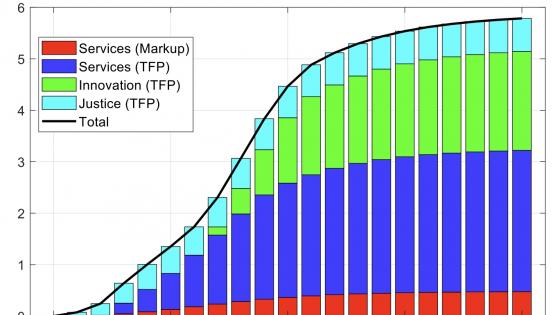DP12336 Structural Reforms and Monetary Policies in a Behavioural Macroeconomic Model
We use a New Keynesian behavioral macroeconomic model to analyze how structural reforms affect the nature of the business cycle and the capacity of the central bank to stabilize output and inflation. We find that structural reforms that increase the flexibility of wages and prices can have profound effects on the dynamics of the business cycle. Our main finding here is that there is an optimal level of flexibility (produced by structural reforms). We also find that in a rigid economy the central bank in general faces a tradeoff between output and inflation volatility. This tradeoff disappears when the economy becomes sufficiently flexible. In that case the central bank’s efforts at stabilizing inflation and output are always welfare improving.


